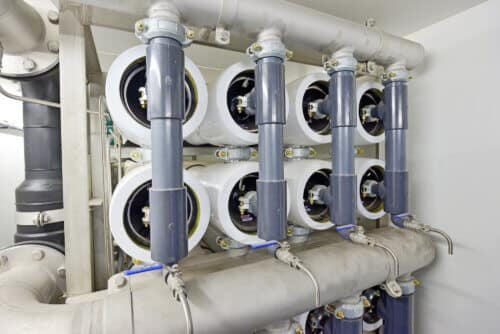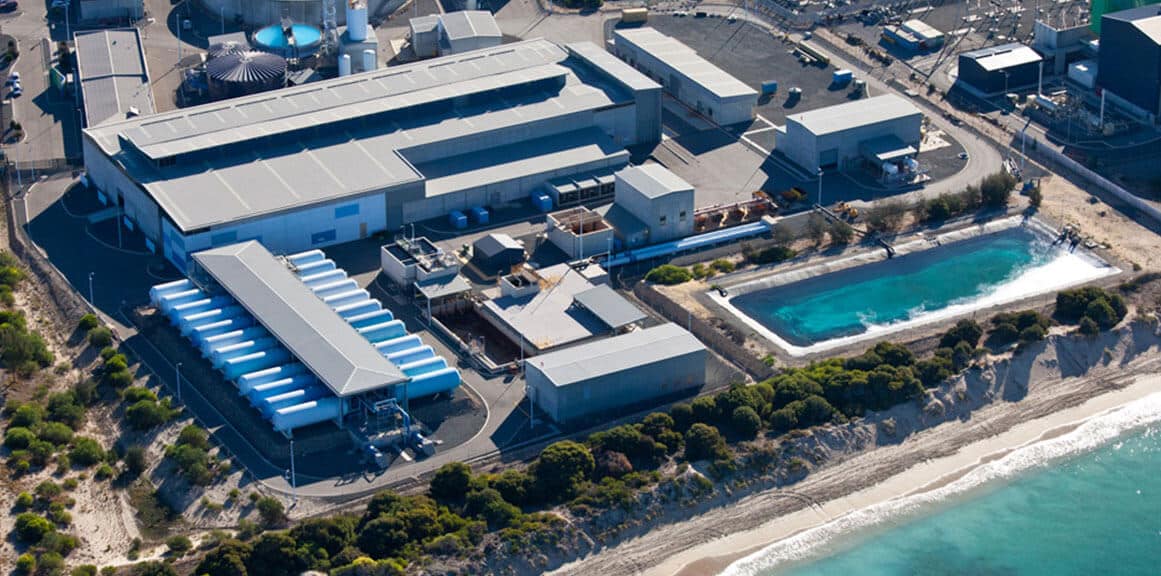A new technology may optimize the process of desalination of sea water - and may also significantly reduce the economic and environmental price of the water we drink
By Racheli Vox, Angle - a news agency for science and the environment

A tender for the establishment was recently published Seventh desalination plant in Israel, which will be located in the Western Galilee, and the cost of its construction will be NIS 1.5 billion, as part of a trend that places desalination as the most central part of the Israeli water system. However, desalination has one major drawback: the enormous energy consumption of the desalination process is accompanied by a significant economic and environmental cost due to the large amount of energy needed for water desalination.
In a new American study Recently published in the prestigious scientific journal Science, the researchers developed a unique technology that could in the future enable the process to be optimized (and cheaper).
The main desalination method used in the world today is reverse osmosis: in this method, seawater is transported through a membrane - a component that looks like a roll of plastic bags, and which is made of the polymers polyamide and polysulfone (a type of thermoplastic). The membrane is semi-conductive: water can pass through it freely, but about 99 percent of the salts in seawater are blocked by it. After passing through the membrane, the water is almost completely free of salts and you can drink it.
Reverse osmosis (RO) is, as its name suggests, a process that is opposed to "normal" osmosis - the natural tendency of water to flow from a place where the concentration of salts is low to a place where their concentration is high. The need that exists in reverse osmosis to exert a lot of pressure on the water (which increases the saltier it is), so that it moves in the opposite direction from the one dictated by the laws of chemistry and leaves the salts behind, is the main reason why it is necessary to invest a large amount of energy to carry out this process.
Savings on the water rate
"In terms of energy, in order to produce one cubic meter of desalinated water, at least 3.5 kilowatt-hours are needed - the amount of energy consumed when running an average washing machine," says Dr. Ido Bar-Zev from the Zuckerberg Institute for Water Research at the Sde Boker campus of Ben Gurion University. According to him, this amount of water is enough for a family of four for about 5-3 days. "The price of desalination of a bucket of water in Israel ranges from 60 cents to the dollar, depending on the desalination facility. By comparison, pumping a cubic meter of water from the existing sources costs 20 cents," he says. Of course, the costs of desalination are also expressed in the water tariff for the consumer, and streamlining the process could allow a reduction in water bills.
"There are many things we still don't know about reverse osmosis membranes," says Dr. Manish Kumar from the Department of Civil, Architectural and Environmental Engineering at the University of Texas at Austin, one of the authors of the new study. "It was not known exactly how the water moves through them, so all the efforts made in the last 40 years to improve their function were actually carried out in the dark."
The new study began when some of the researchers discovered to their surprise that thicker membranes allowed easier passage of water - this is contrary to the logical expectation that the thickness would actually make it more difficult for water to pass. In order to solve the mystery, the team of researchers that formed developed a method to map the structure of the membranes at the level of a few nanometers (billionths of a meter), this with the help of a penetrating electron microscope (TEM): in which an electron beam is used as a substitute for a light source, to magnify small objects to the size of up to 10 million times their original size. Using these microscopes, the researchers photographed a reverse osmosis membrane from many different angles, combined the photographs into a XNUMXD computer model of the membrane and used it to examine the paths that the water takes as it passes through it.

Using this method, the researchers discovered that the function of reverse osmosis membranes is impaired when their density and mass are not uniform along the length of the membrane. The new method developed by the researchers can make it possible to create uniformity in the composition of the membranes at the level of the individual nanometers, which may increase their efficiency by no less than 40-30 percent, and allow energy and cost savings without harming the ability of the membranes to prevent the passage of salts and pass water through them.
Clean the bacteria from the membrane
The new study was published not long after the publication of Another promising study in the field. This study, which was published last October in the scientific journal Nature Sustainability, and one of its authors is the Israeli researcher Prof. Menachem Elimelech from Yale University, is designed to deal with another difficulty in the reverse osmosis process: the difficulty of cleaning the membranes from bacterial contamination (biofilm - a three-dimensional layer consisting of many different bacteria and proteins and polysaccharides secreted by them) that accumulates on them, which significantly lowers their effectiveness. The problem is that using substances like chlorine, which are effective in removing bacteria, damages and actually destroys the surface of the standard RO membrane. In order to solve the problem, the researchers developed a membrane that is not made of polyamide or polysulfone but of polyester - and according to the researchers, cleaning it with chlorine does not harm its function. "This is a groundbreaking article," says Bar-Zev. "If they manage to prove that it also works on larger scales and over time, it will be a leap forward in technology."
Until innovative methods such as those presented in the new studies are implemented, desalination will probably continue to charge us high costs in money and energy - but according to experts like Ben-Zev, it is also necessary. "Expensiveness is a relative matter", he says. According to him, a situation in which Israel's groundwater reservoirs will dry up due to over-pumping and be filled with sea water is "more expensive" than desalination. "Quite a few countries in the world did not want to carry out desalination because of the cost - and suddenly reached a situation where they have no water", he concludes.
More of the topic in Hayadan:
